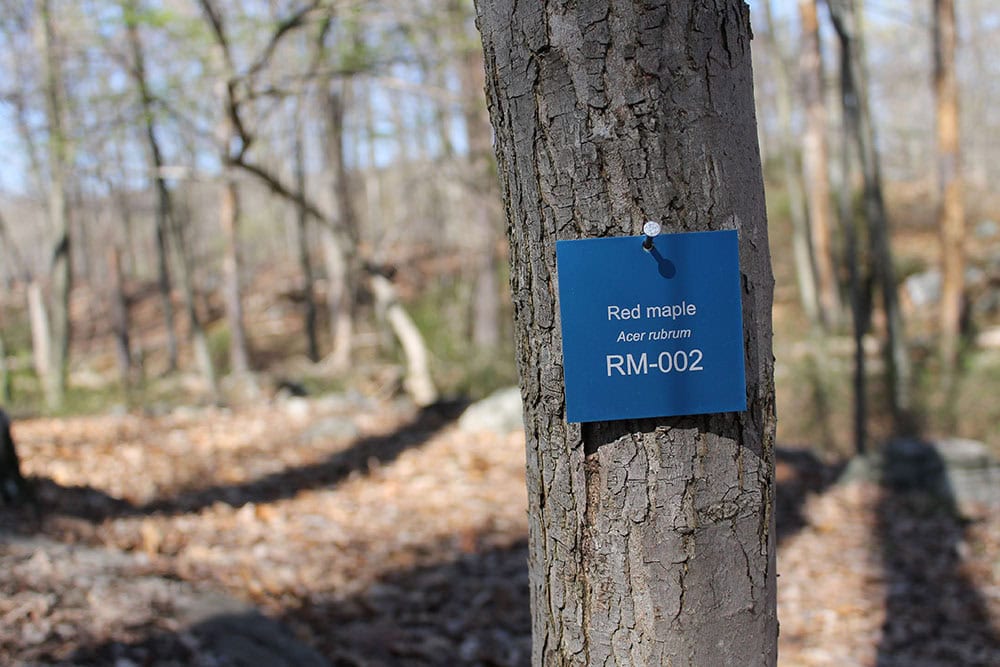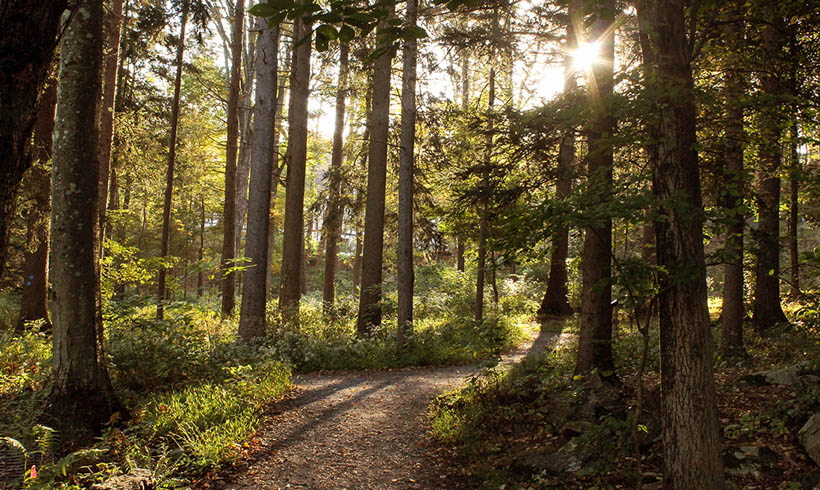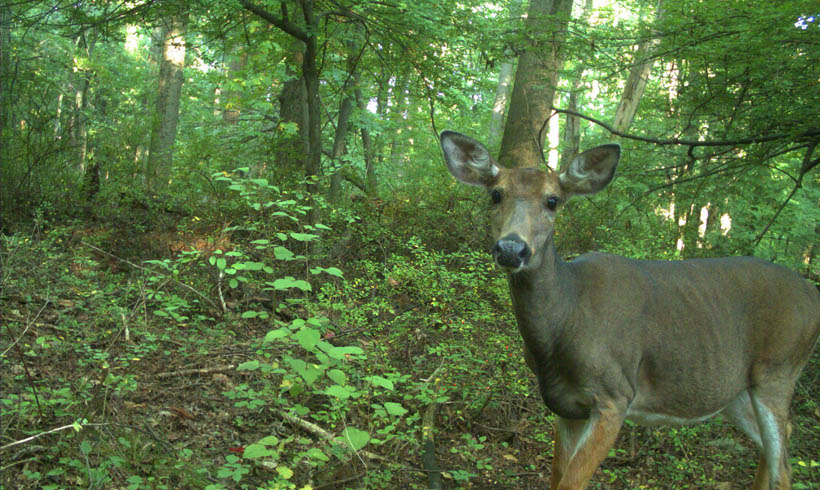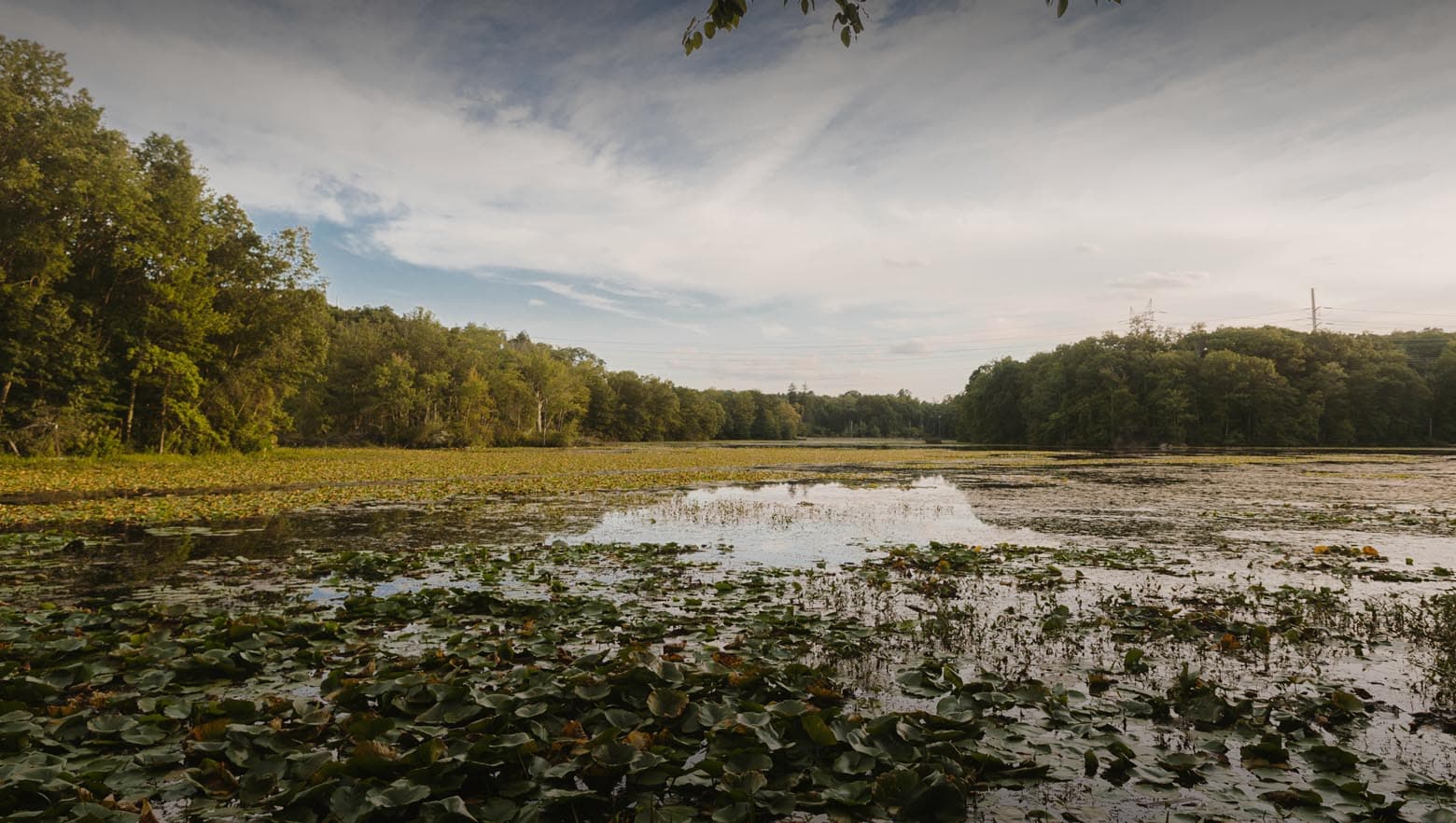Research and Monitoring

Scientific research guides our stewardship work. Over the last 10 years, Teatown staff scientists have studied many aspects of the preserve’s habitats to plan current and future management efforts.
Long Term or Annual Projects
Forest Health Monitoring

We study many aspects of the forest vegetation and wildlife to determine population trends. Our long-term forest plots can measure canopy dieback, tree density and coverage, seedling abundance or regeneration potential, and wildflower or other plant diversity. We can determine what impact deer are having on the forest, monitor for threats from invasive plants or insects, and evaluate the effectiveness of our forest management strategies.
We also use deer exclosures and individually marked plants to monitor the effects of deer on our forests. Our deer exclosures were installed in 2013, and in 2017, we installed several plots to monitor the growth of American beech root suckers and witch hazel stump spouts. Measuring the height of the growth of the plants can help us determine how much deer browsing is occurring on the preserve. By annually monitoring how tall the root suckers and sprouts are, we can further evaluate the effectiveness of our deer management program.
Through our long-term forest plots and spot surveys along trails, we also monitor for invasive insect pests like the Emerald Ash Borer and Hemlock Woolly Adelgid. We regularly monitor invasive plant presence along trails, roads and other disturbed areas to determine where management is most needed and to remove newly invaded plant species.
Deer Population Monitoring

We have three different methods of monitoring the deer populations on the preserve. First, we use camera traps estimate a population size based on the number of unique males. Each antlered male deer has unique antler shape, size and number of points that can be used to identify males individually. In September, we set up numerous cameras on deer trails to identify males, and count the frequency that they, does (female deer), and fawns walk in front of cameras. We then use a formula designed by other scientists to estimate the size of our deer population.
In the late winter/early spring, we also conduct pellet counts to refine our deer population estimates. We walk five one mile long transects and stop at certain intervals to record how many deer pellet groupings are encountered. Numbers are then inserted into a formula that calculates a deer density based on the total area surveyed.
Lastly, every few years we hire a company to fly over the preserve and count the number of deer as a snapshot-in-time. They use forward-looking infrared radar (FLIR) to count deer at night when there are no leaves on the trees. These estimates are accurate, but only provide values for the single day the flyover was conducted.
We apply these three different techniques because estimating a deer population is inherently difficult. We can use the combined data to serve as index from year to year to determine if our population is decreasing, increasing, or stable. We use these estimates and vegetation trends to adjust our deer management program as needed to better meet management goals.
Beaver Management

We don’t have any formal beaver monitoring programs. We regularly monitor our spillways, check for hazard trees along trails, and monitor WFI to mitigate beaver impacts. We also set up cameras to watch for beaver in high activity areas.
Our Lakes

Teatown, Vernay, and Shadow Lake are all manmade lakes that are eutrophic. A eutrophic lake is one with a high amount of nutrients that allows for abundant growth of plants and algae, which can deplete the dissolved oxygen content in the water. Eutrophication can occur through natural processes, but is often mostly associated with runoff from agricultural land or surrounding developments. Teatown monitors the water quality in Teatown and Vernay Lakes during the growing season to observe any unusual changes. We also monitor the vegetation in our lakes, including aquatic invasive species. We have a few invasive aquatic plants in our lakes, but most are at low densities. Every summer hand pull water chestnut in Teatown Lake so that it does not spread to other water bodies in the area. We also regularly monitor for the presence of Hydrilla, a highly invasive plant recently found in the Croton River.
Carnivore Monitoring

Teatown monitors carnivore presence on the preserve using camera traps. Camera traps offer resource managers and researchers a unique way to non-invasively study wildlife on the preserve. Using the information we collect, we can monitor when new carnivore species appear and work to determine what conservation actions are needed to protect existing species. In addition to confirmed sightings from staff and visitors, our cameras have also detected activity of coyote, red fox, and bobcat on the preserve. In the winter, we sometimes see fisher on the cameras, and in the fall/spring we occasionally see black bears moving through Teatown. Part of our carnivore monitoring is done in collaboration with the Environmental Management and Monitoring Alliance (EMMA).
After detecting fisher at Teatown for the first time in 2014, this piqued our interest into launching a more elaborate study throughout Westchester in 2015 and 2016. With the help of Westchester County Parks and many other scientists and volunteers in the region, we studied fisher presence at over 80 different locations over two years. This study revealed that fisher was present at 6 different locations, and it is likely that fisher will continue to expand their range in this region.
Phenology Trail

Through the Environmental Management and Monitoring Alliance (EMMA), we monitor plant phenology along a designated trail. Phenology is the study of when life cycle changes occur in plants or animals. For example, when do flowers bloom? When do frogs lay eggs? When do leaves turn colors in the fall? These and many more questions help us better understand how life cycles of plants and animals are affected by a changing climate at local and regional scales. Currently we are only recording plant phenology, but may include animal phenology in the future.
Other projects
Breeding and Wintering Bird Monitoring
Birds are charismatic wildlife that we hear and see all the time in nature. Oftentimes, they may be the only wildlife we notice in the forest. In the early summer, scientists record breeding bird data at designated points to determine bird diversity and population size on the preserve. Each year we can determine if any major changes are occurring in our bird populations, and over many years, we can detect changes in overall abundance. Teatown also participates in Audubon’s Peekskill Christmas Bird Count, where volunteers walk and drive all around Teatown to count and identify birds. This information is also useful for monitoring trends in bird populations.
Woodland Pools
Woodland or vernal pools are seasonal pools in the forest that provide unique breeding habitat for frogs, salamanders and other species. Every spring, volunteers and staff walk roadways after the first spring rain event and record the types of amphibians moving to and from these pools. Occasionally, we count and identify egg masses to determine what species are breeding in our pools and how successful they are in surviving through the growing season.

